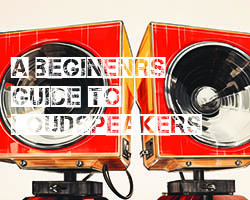ENGLISH ELECTRIC EE1 ETHERNET FILTER REVIEW
The £250 English Electric EE1 Ethernet Filter is an in-line filter designed to improve your streaming system. Read on…
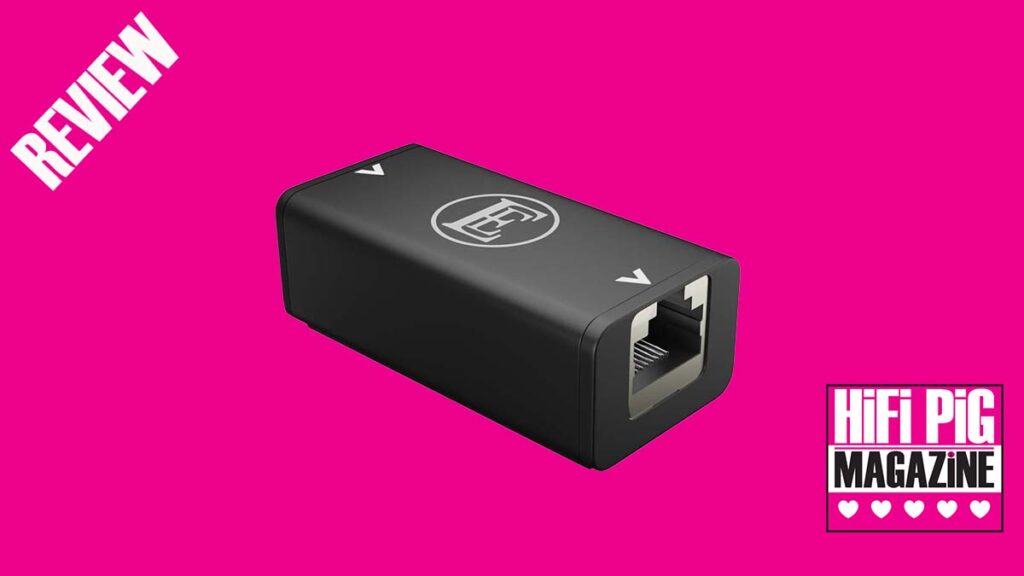
WHAT IS THE EE1 FROM ENGLISH ELECTRIC
There was once a time when we believed all that was needed to get the best from cloud-streaming music services was a router/modem and a suitable streamer. Sure, a wired connection would ensure a more stable connection, but many of us would not bother with the inconvenience. As things moved along and high-resolution streaming became the norm, we learned that ‘wired’ via a network switch was the way to go. Subsequently, low-noise network switches designed for audiophile applications appeared on the market, which raised the game considerably. Not least the 8 Switch and 16 Switch from English Electric, the latter I reviewed many moons ago for HFP.
To my knowledge, the first in-line ethernet filter to appear on the market was the eno from British company Network Acoustics, which I reviewed for HFP in late 2022. Whilst highly effective, the eno sits at a premium price point and is pretty much only available for mail order, hence paving the way for more affordable products such as the EE1 from English Electric, which can be distributed and demonstrated by sister company, The Chord Company, across their extensive dealer network.
An in-line ethernet filter can be placed between two points in your audio system’s network, such as between the router and switch, switch and streamer, or even between a network server or NAS device and streamer and/or switch. The EE1 can even be beneficial in your networked video systems say English Electric. So, there is no reason why several units cannot be used. The Chord Company/English Electric kindly supplied me with two filters and two 0.75m C-stream ethernet cables. Each filter retails for £250.
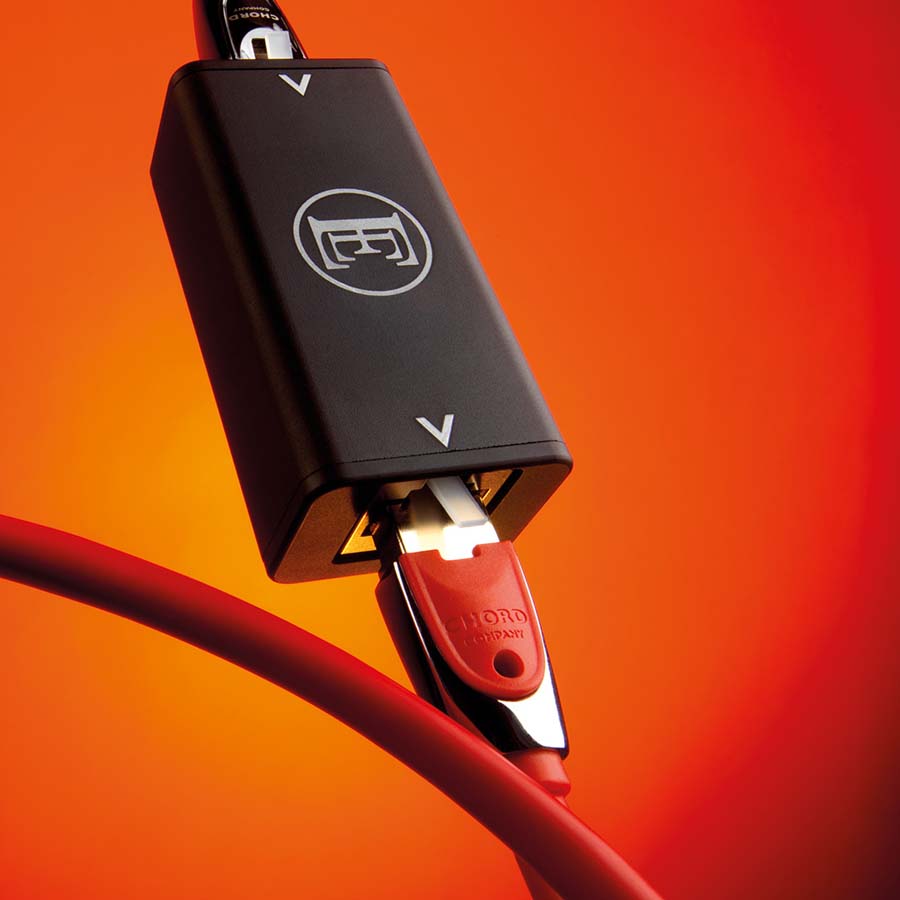
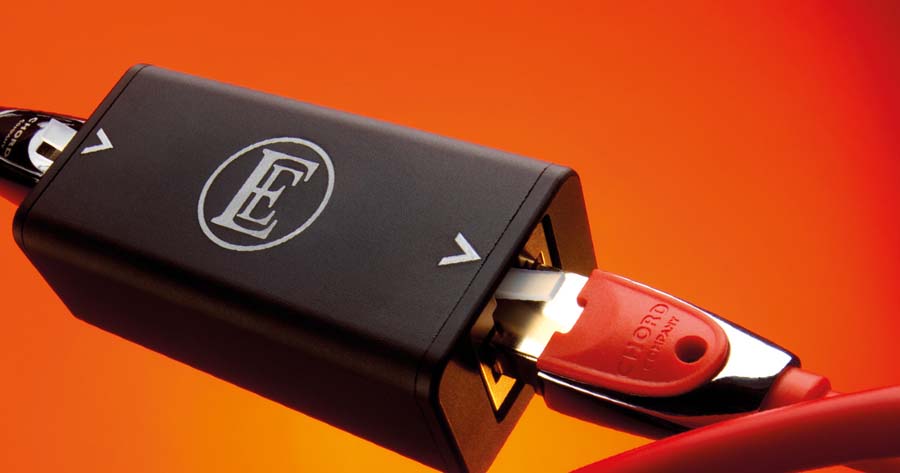
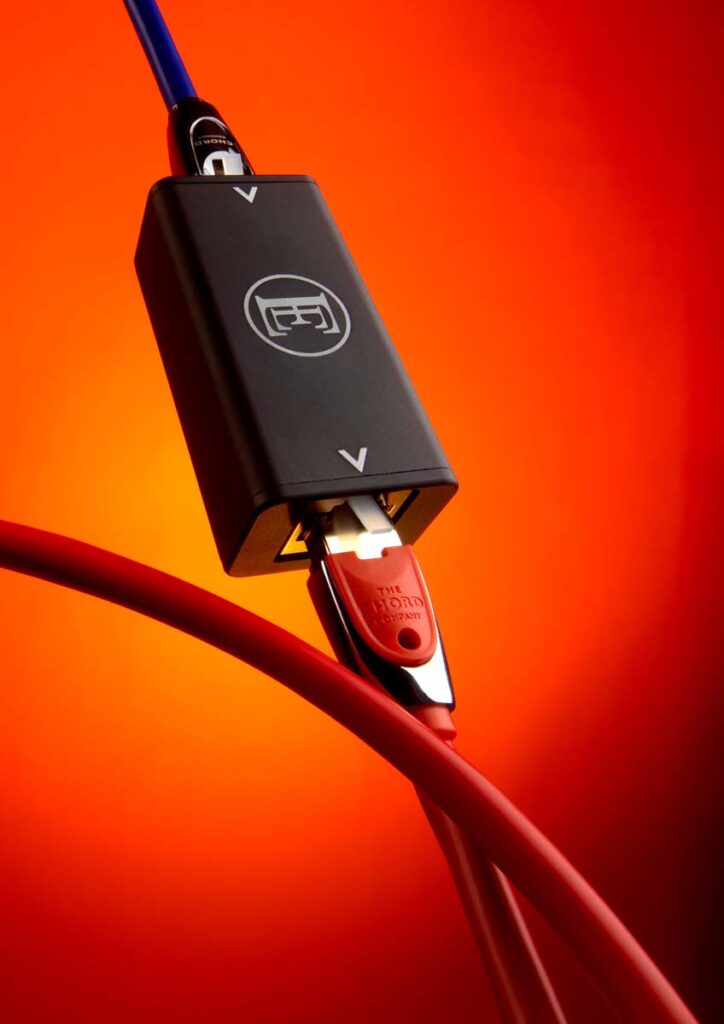
FORM FACTOR
The EE1 is a small aluminium box with input and output sockets at each end. An arrow designates the input and output sides. We are not given too much information about the internals’ contents. However, a ‘naked’ example was handed around The Chord Co’s demo room at the Bristol Sound And Vision Show last February. What we do know is that the internals claim to block low-frequency noise by way of Galvanic isolation and reduce high-frequency noise. The noise is turned into heat, although thankfully, the EE1 does not get hot. Such achievements are the result of extensive measurement and listening tests by the company’s boffins in Amesbury, Wiltshire. No additional power supply is required. The naysayers will try and argue that digital music is just binary, so noise does not matter, especially with packet data which is ‘check summed’. To those, I will remind them that digital music is transmitted as analogue signals – remember the strange noises we used to hear when loading computer software via tape or heard using the old ‘dial-up’ modems? When this noise accompanies these signals and enters our systems, for a number of reasons, it degrades the resultant music. To those who say that this is not possible, we at HFP suggest that they listen to products like this with an open mind and judge the results – if you cannot hear any benefit, then don’t buy one.
DOES THE EE1 IMPROVE YOUR ENJOYMENT OF MUSIC AND MOVIES?
It takes about five seconds to hear the EE1’s change or, indeed, see if you are using it on your TV feed. The music sounds cleaner, more dimensional, airy, and detailed. As super tweeters have proved, improving the high frequencies seems to improve perceived bass quality, and this is the case with the EE1. The cleaner top-end brings greater levels of definition, which, along with giving a more ‘foot-tapping’ experience, the greater high-frequency definition that accompanies bass notes, makes instruments like bass guitars and bass synths easier to follow.
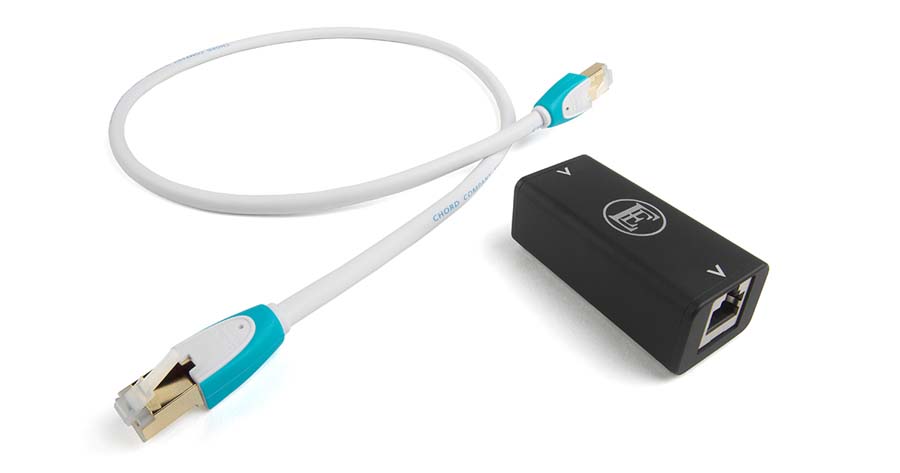
I have been using various filters of this type in my reference system over the last couple of years, including the EE1. So before starting my evaluation of the EE1, I removed all filters and fancy cables and replaced them with a single length of C-Stream cable and listened to a few tracks from Qobuz, subsequently adding the EE1 between the network switch and my Moon 780D Streaming DAC. Compared to what I had become accustomed to, the sound was pretty hazy and lacking in life. So, adding the first EE1 was a breath of fresh air. In this setup, an Audia Flight FLS1 Preamp and FLS4 Power amplifier fed a pair of Kerr K320 MkIII speakers.
The first piece of music I listened to was Nala Sinephro’s latest album, Endlessness, in 24/96. Immediately, I noted that the cymbals were cleaner and more rhythmic, and the electronic effects, which, for want of a better expression, were bleep-like noises, jumped forward to the left of the soundstage. The bass was now both more defined and more textured. Next up was Tony Levin’s Me and My Axe in 24/48. Again, the cymbals and drumkit were cleaner, and their timing improved. The studio reverb was far more evident, and the bass and lead guitar lines had more detail and were easier to follow.
Whilst I am not a fan of her studio work, Raye’s The Thrill Is Gone, from her Live At Montreaux Jazz Festival album, in 24/48 shows she is a talented performer. Prior to adding the EE1, the top end was a bit of a mush, and the brass instruments were somewhat piercing. After adding the EE1, the track was far more enjoyable to listen to. The high frequencies were better resolved and defined but of more musical importance; the track was now fun to listen to. The bass guitar jumped forward and had a natural bounce to it.
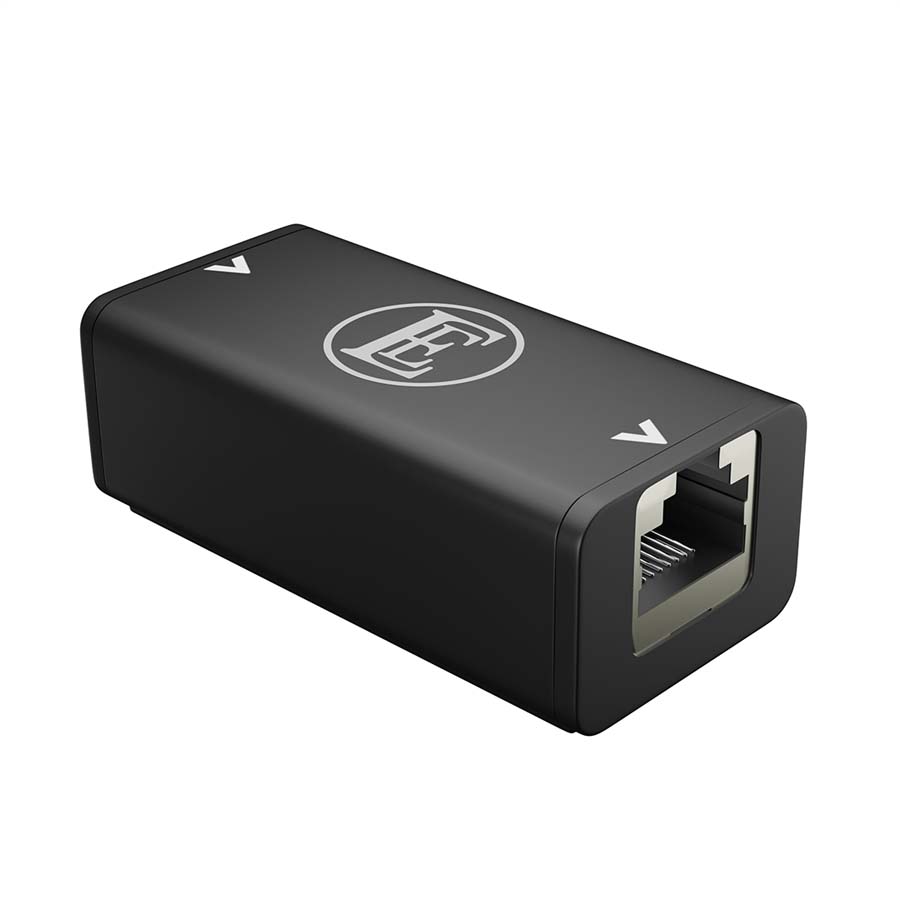
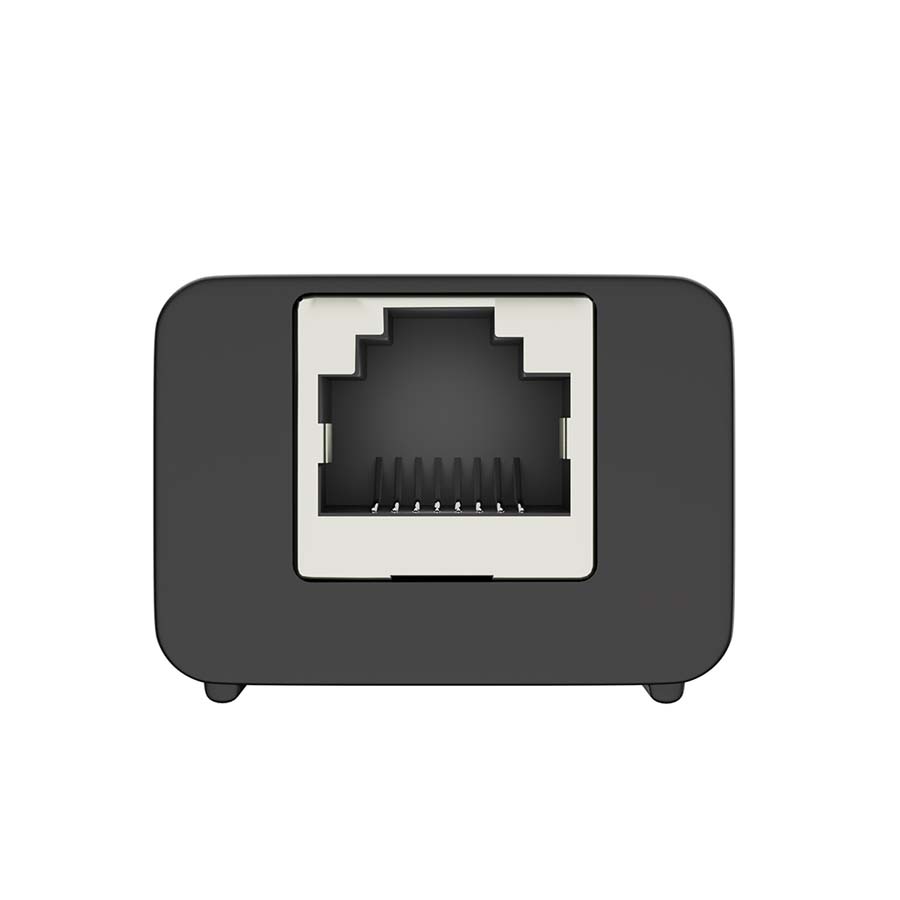

Moving over to something more soothing, Mao Fujita’s 72 Preludes – Chopin Scriabin Yashiro, in 24/96. Prior to adding the EE1, the piano had a piercing ring to it and lacked life. The EE1’s resolving skills meant the sound was actually slightly more spotlit, which helped reveal the recorded acoustic, yet those nasty edges were much reduced, making for a more relaxed presentation. A choral track streamed from a randomly selected new release, Charles Villiers Stanford, Partsongs, Pastorals and Folksongs, in 24/192 again benefitted from the EE1’s noise-killing talents, sounding more immediate, with improved vocal phrasing, ambience and texture.
It was now time to add the second EE1, which I placed between the router and the network switch. Now, the Tony Levin track Me And My Axe sounded more airy, cleaner and notably more detailed. I could now hear the strings being plucked, and I was getting the kind of guitar sound you enjoy when you hear a live band. The characteristics of Steve Hunter’s guitar pickup were laid bare. There were musical benefits, too, particularly on this Tony Levin track, which revealed a new-found level of interplay between Tony’s bass and Steve Hunter’s guitar. The Raye track had more of that live feel; the previously mentioned mush had all but vanished, and the reverb to the vocals and guitars, in particular, was easier to discern.
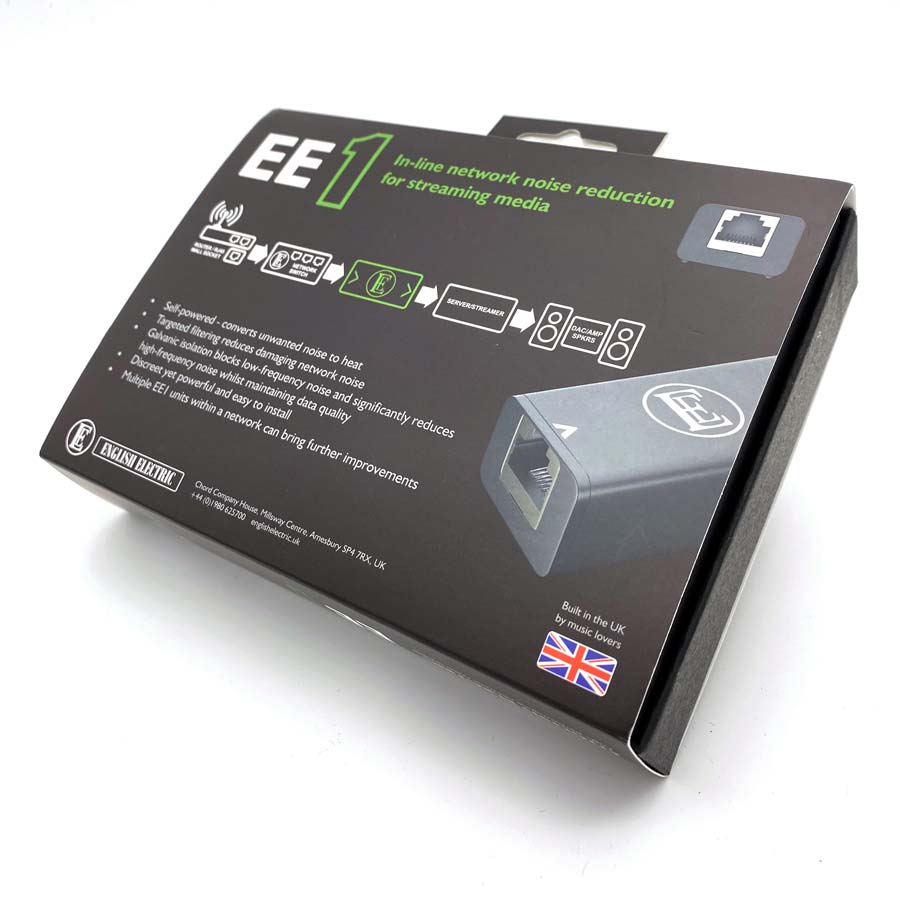
Replacing the supplied Chord Company C-Stream cables with a more expensive cable revealed there were further benefits to be enjoyed by doing so, with the soundstage now more expansive and the bass gaining in both fullness and weight when I substituted the C-Stream for my reference network cables. A flick through The Chord Company’s website revealed that the C-Stream is the base model in their range, which extends to levels well above that of the cables I had to hand. So, users of higher-end systems should discuss cable upgrade options with their supplying Chord Company dealer.
I generally use my Chord Hugo2/2Go wirelessly in the bedroom, but when listening in the office via headphones, I take advantage of the router’s close proximity and use a wired connection, which sounds better. I don’t have a network switch in the office, so the EE1 came in handy and proved similarly beneficial in this portable headphone setup. Whilst this is not surprising, it has further widened the gap between wireless and wired connections, which has since made it harder to listen to the former.
As mentioned earlier, you can use the EE1 in a streamed TV setup. Here, Netflix streams look noticeably sharper and cleaner, especially during dark scenes. Similarly TV audio is improved, which was a bonus. One word of caution here: I used the EE1 on the feed into my BT box, which is connected to the TV over HDMI. If you are using your TV’s ethernet connection, network noise will travel along the ground plane, so you will need to place the filter on the feed into the TV rather than your TV box or use an additional filter here.
QUIBBLES
In some setups where I have used the EE1, it has added a little too much top-end energy, which upset the balance of those systems. This was not the case with any of the equipment that I used for this review, however. The similarly priced Smooth LAN from Stack Audio gives a more relaxing presentation, which may prove a better match in some systems.
CONCLUSION
I read a lot on forums about how streaming cannot match the results of physical media. Devices like the EE1 demonstrate that noise is the limiting factor and helps unleash the potential of streaming. As my results show, even with a good network switch in the system, the EE1 was able to improve my streaming experience considerably. Users with high-end setups will benefit from improved streaming cables. Still at £250, the EE1 and C-Stream improved my setup beyond what I expected, so it could prove more beneficial than spending similar amounts on component upgrades elsewhere in your system. That they can be hidden away as part of your system’s wiring loom has to be a bonus.
AT A GLANCE
Build Quality:
This is a very small device, but solid and perfectly formed
Sound Quality:
Clean and lively presentation, with enhanced soundstage. Reduces high-frequency hash and improves definition across the frequency range, making instruments easier to follow.
Value For Money:
£250 is fair value for the improvements I have experienced with these devices
We Loved:
It can improve the sound of most wired network music systems while being easy to hide from sight. The EE1 makes music sound clean, lively, and engaging, yet it can also improve the picture quality of streamed video content
We Did Not Love So Much:
It would be easy to get carried away and purchase multiple units and additional cables, which could prove expensive. If your system errs on the side of brightness, the additional high-frequency energy revealed by the EE1 could tip the balance
Elevator Pitch Review: This is a simple and effective upgrade for your wired music streaming setup. These devices help you enjoy streaming music and mean you listen to your system more, which can only be a good thing
Chris Baillie
Merit-Based Reviews and Awards
At HiFi PiG, our reviews and awards are always free. No fees for reviews, no fees for the recognition we give.

























































